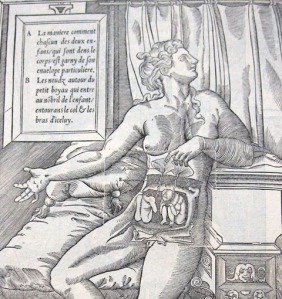This guest post comes from Keeley Durnell, a postgraduate student in the school of English, Communication and Philosophy, and who has been cataloguing Early Modern books from the Cardiff Rare Books collection as part of a Project Management module.
Well, not just about corn. Corn and religion. These are the sorts of topics that I have come across since I began cataloguing some of the vast array of rare books in Special Collections. The Rare Books section at Cardiff University boasts a fantastically diverse range of material with which to satisfy anyone’s scholarly interests.
One which I had the privilege to work on this week was The Marrow of Modern Divinity by Edward Fisher, bound with A Poem on the Redeemers Work; or Christ all in all, and our complete redemption (1647) and No Salvation without Regeneration (1647). This was a fascinating volume for many reasons.

The Title Page of The Marrow of Modern Divinity by Edward Fisher (London: Giles Calvert, 1647)
Firstly, the texts that were bound together were all religious in nature, but they were from at least two separate authors. Completing the records for these texts was therefore difficult, because only the first text had a title page to glean information from, and the other two texts did not even have so much as a named author, let alone imprinting or publication information.

Titles Pages of ‘A Poem on the Redeemers Work’ and ‘A Poem on the New Birth’, both bound with Fisher (London: Giles Clvert, 1647).
There were also several ownership inscriptions from different years accompanied by some interesting upside down pen trials (the technical term for doodles) which could be found on the inside of the back end paper in this particular book.

The pen trials found in The Marrow of Modern Divinity.
Getting glimpses into previous centuries and lives so far from my own is one of the things I find the most intriguing about being able to catalogue the rare books.
I have had the opportunity to see leather bound books and hand sewn text blocks with sprinkled or dyed edges and they are sometimes so different to the type of books that are commercially available today. As part of my studies are concerned with print culture, getting to examine texts that went through the original printing presses and seeing engraved plates and woodcut borders is just fascinating. To know that in just a few centuries that books have changed so much in terms of their production and distribution is incredible.

The Binding of The Marrow of Modern Divinity
Comparing modern imitations of old styles, such as this version of The Complete Works of Shakespeare that was published in 2004, with original copies from across the centuries is indescribably useful when thinking about modern print culture and how it has changed and is still changing.

The 2004 Edition of The Complete Works of Shakespeare (New York, Barnes and Noble Inc, 2004)
There is so much that the Rare Books Collection can offer to students of literature, history, religion and numerous other subjects. But, even if there is nothing there which is relevant to your research interests, I would definitely recommend popping down and taking a look at all the beautiful items that make up the Special Collections. It is any book lovers dream.















